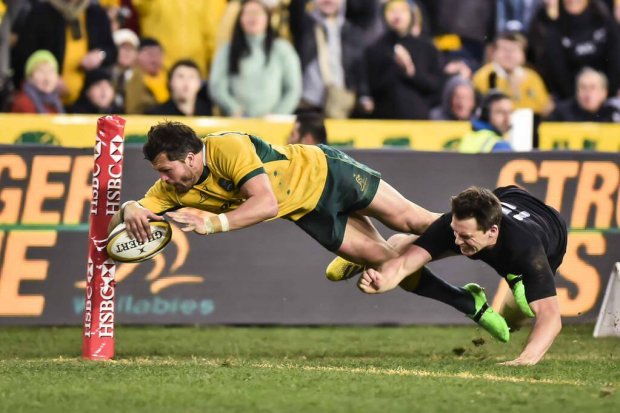Only posted by Bobas – actual writer D.Mitchell
RUGBY WITH LESS RISK
I like teams chancing their arm and playing ball-in-hand rugby. But I’d rather they win. A whitewash from the English at home in the middle of a lacklustre Super-rugby season for the Aussie teams drives me to think outside the box and float a few ideas for how can you might take a bit of risk of out of your game. I promise that they aren’t all tested, and will probably annoy some people.
CONSISTENTLY TAKE THREE POINTS
There have been a stack of times this season when teams (especially the Wallabies) should have taken the points. Even when the seven point gamble paid off, I’d argue that they could have kicked three and had the opposition back under pressure within a couple of minutes. The big thing is to have a plan: definitely don’t kick what they will likely miss, but kick everything they should make.
How you decide what to kick should depend on your kickers ability. Check this data sample from super rugby 2016, or go to the source (http://goalkickers.co.za) and choose a kicker to review. 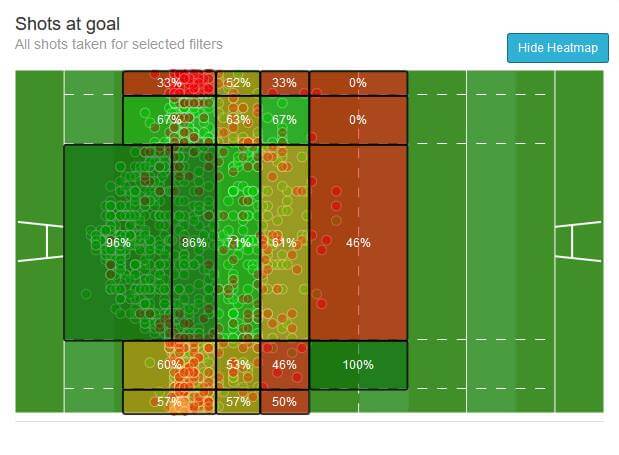 For most, I’d argue that if your 10m or more in from the sideline and within 40m of the posts (i.e. draw an ark, not a straight line) you need to place kick that every time, and you’ll kick well over 70% for penalties.
For most, I’d argue that if your 10m or more in from the sideline and within 40m of the posts (i.e. draw an ark, not a straight line) you need to place kick that every time, and you’ll kick well over 70% for penalties.
Otherwise, choosing a scrum or lineout will depend on field position and dominance. This also clarifies when it is acceptable to take a quick tap for everyone on the team. No one-should take it otherwise. One caveat: If you’re up by 15 points or more—do whatever you want.
That data also shows just how big a difference it makes to move toward the posts when placing a try. Inside the 15m and 22m lines, players kicked with a 96% accuracy. So lazy placement of a try, when you could have grabbed a couple of metres, could cost you two points.
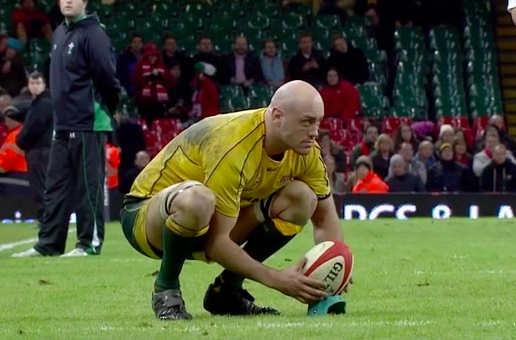
TAKE OUT THE HIGH BALL, BRING IN MORE TACTICAL KICKING.
This season we’ve seen a number of genuine contests for the ball being penalised and even yellow carded. We’ve also seen players leaving the field prematurely for concussion tests or from injury. Until rules change about this (e.g. only allowed to jump for the ball off two feet), I think you risk far too much by putting the ball high and running on to it.
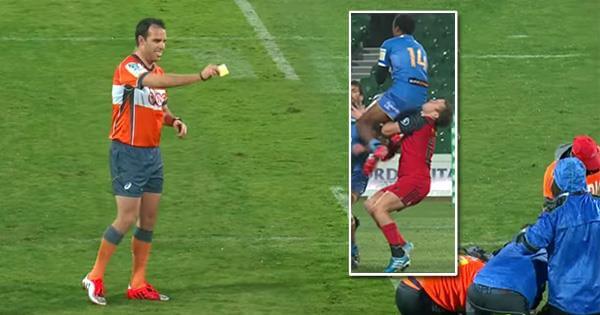
The territory kick, the lower chip and chase, and the grubber remain viable options and should be used more often. The high ball is not just a hit-and-miss option that could create a counter-attacking opportunity for the other team, instead, one way or another, you might lose a team member.
THROW LINEOUTS UNDERARM
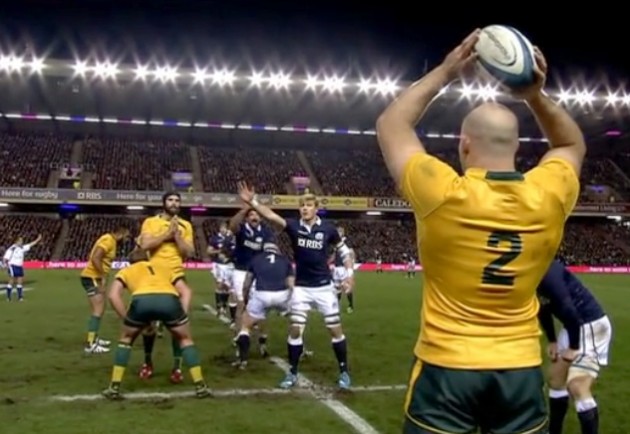
I’m not saying that there aren’t people who throw perfectly game after game. This is about minimising risk. You need to throw an oval ball dead straight and reasonably high and hit a target 3.5m high and 5-15m away but you don’t have anyone standing immediately in front of you. So lump me in with Greg Chappell for demanding this but at least we’ll do whatever it takes beat New Zealand.
Stand square with your hands near your knees and your hands at either end of the ball and lolly pop the ball to the target 1.4m above the jumpers head. Arms down will also make calls easier to hear since you don’t have your arms over your ears.
Basketball free-throws (shooting 4.5m to a height of 10feet) were shot underarm for years. Rick Barry (one of the last to shoot underarm free-throws) shot over ninety percent for his career. He said “Less things that can go wrong, less things that you have to worry about repeating properly in order for it to be successful…” Check him out in action here—
Why did NBA players stop? Because they cared more about not looking like a sissy than they did about scoring points. I don’t care if you’re called a sissy or a Trevor so long as you don’t give away free-kicks and lose fewer lineouts.
Finally, while I’m on this, when you kick for touch, call the lineouts before you actually line up! You’ve got time while the ball is sailing into touch before you get down there. Why call out a last minute decision from 8m away right next to your opposition with a crowd drowning you out?

